Crawl, Walk, Run: Adding SMS to Your Cross-Channel Strategy
Published on August 17, 2020/Last edited on August 17, 2020/6 min read
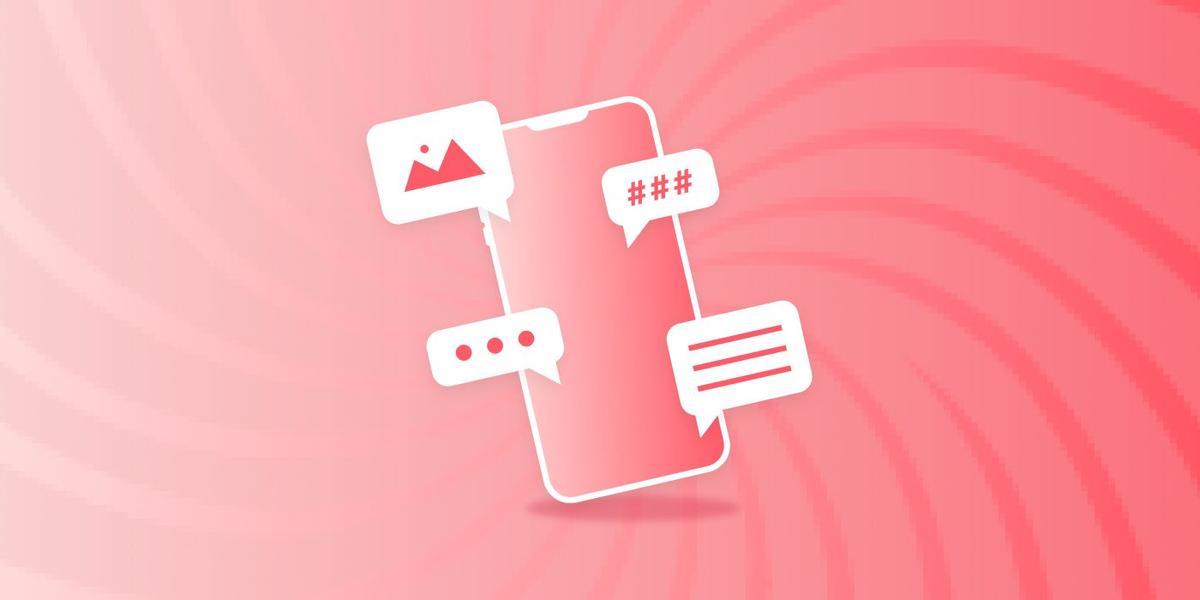

Team Braze
On average, consumers send and receive around one hundred text messages per day, maybe even more. They also open 98% of the texts they receive, too. But even though SMS is a highly-engaged channel for most consumers, many brands have trouble seeing its full value as part of their cross-channel campaigns. Maybe they haven’t started sending SMS or invested in building out an SMS list. Maybe they use SMS, but only for purely transactional notifications—or treat SMS like a channel for generic, batch-and-blast messages. Either way, they’re missing out on the impact that this key channel can bring to their customer engagement efforts.
Whether you’re looking to add the channel to your messaging mix or want to improve your current SMS strategy, identifying the right action at the right level of sophistication is half the battle. At Braze, we’ve found that it’s helpful to take a crawl/walk/run approach to SMS marketing, in order to ensure that you’re taking thoughtful steps as you make your way from no use of this channel to highly relevant, personalized SMS messaging flows that speak to each individual customer.
So, to help out, we’ve broken the journey to advanced SMS marketing down into three key stages and put together three use cases for each stage that will help you drive strong customer engagement wherever your brand’s current SMS journey stands.
Stage One: The Road to SMS Messaging
Before a brand can start leveraging SMS messages as part of their cross-channel customer engagement mix, they need to ensure they have a vetted list of textable customers. US law forbids SMS marketing to individuals who haven’t provided express written consent to be messaged in this channel, making building an SMS list a challenging—but essential—undertaking.
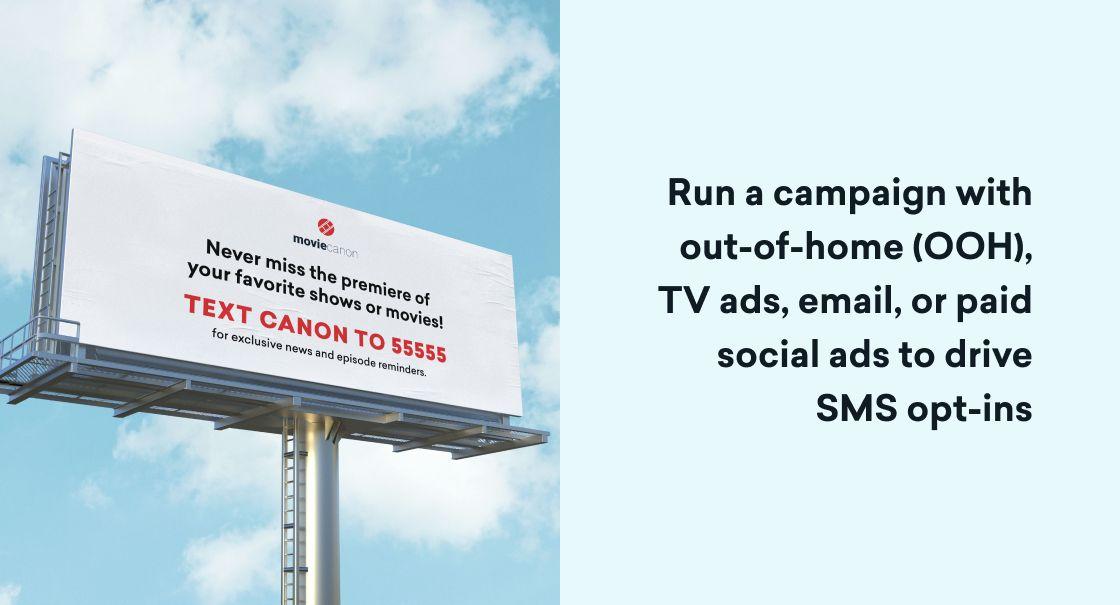
For brands that are starting from zero when it comes to their SMS list, it makes sense to think about how they can leverage other channels at their disposal to make current and prospective customers aware of their SMS program and the value it can provide. Depending on your brand’s specific audience and your customer engagement audience, that might mean promoting SMS updates in an email, with digital ads, or even on a billboard.
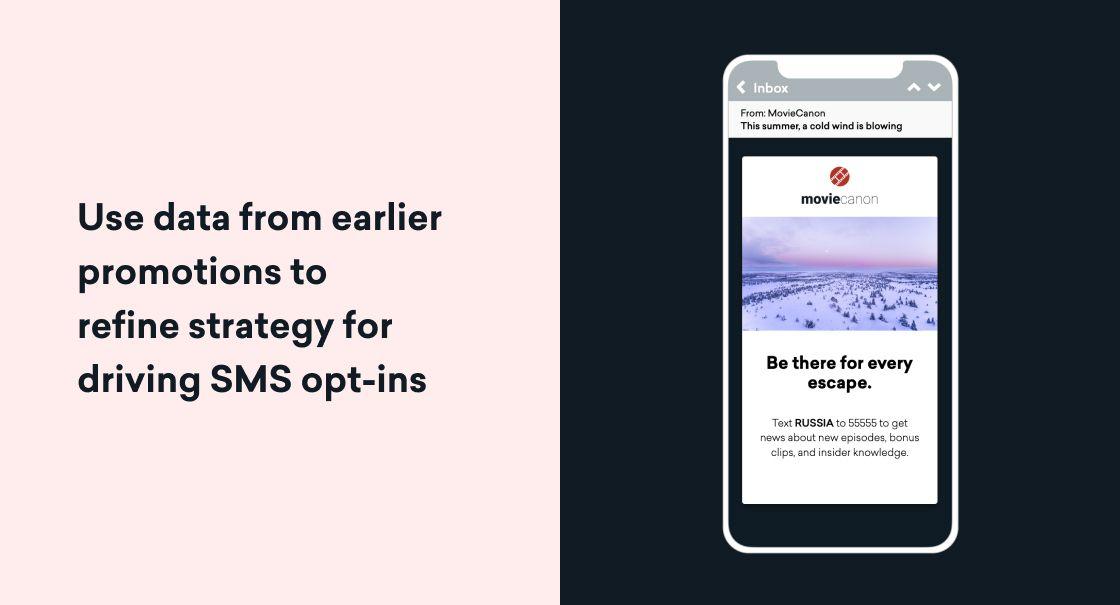
Once your promotional efforts have led to some sign-ups, it’s time to use the data you’ve collected on what channels have led to the most opt-ins to optimize your acquisition efforts. If, for instance, you’re finding that email is having more success in persuading current customers to opt in for SMS, you can leverage this channel to send more targeted promotional messages that leverage their knowledge of your brand.
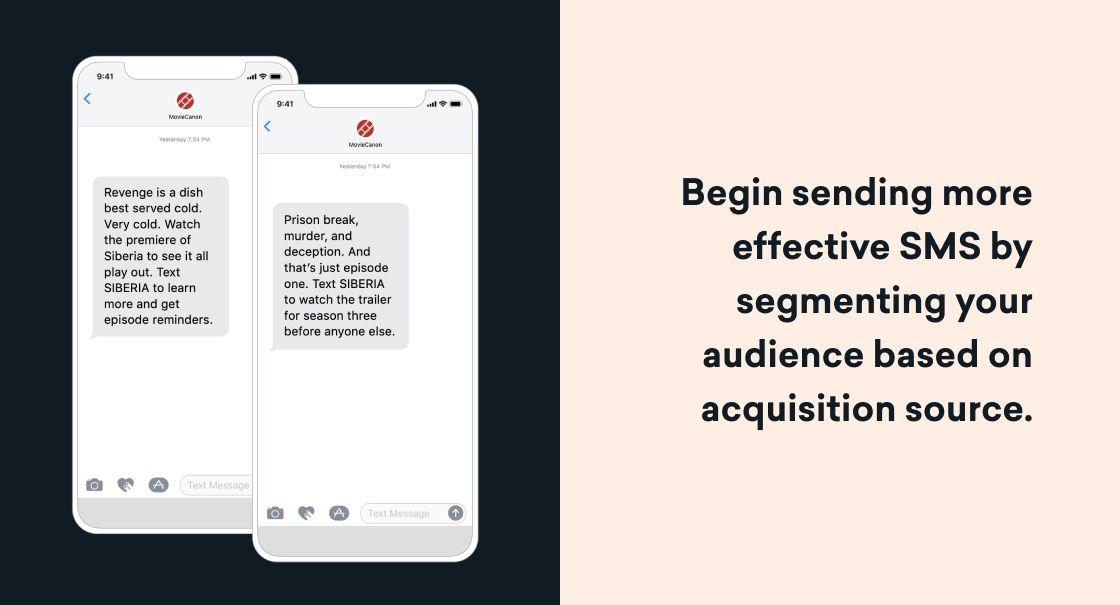
As your SMS sign-up efforts lead to a larger audience of opted-in customers, you may find that there’s an opportunity to start sending SMS campaigns that draw on the specifics of the different acquisition campaigns you ran. For instance, if your OOH campaign used noticeably different creative than your email campaign, you could segment your SMS audience by acquisition channel and tweak copy to ensure that there’s continuity between the messaging that pulled them in and the messages you’re sending them.
Stage Two: Driving Stronger Channel Engagement with Segmentation
Once you have a solid audience of SMS-able customers, the smart move is to start thinking about how you can elevate the experience you’re providing with your SMS campaigns. The key to making that happen is simple: You need a better understanding of message recipients’ interests, preferences, and behavior in order to send outreach via SMS that really speaks to them. And one of the best ways to gather that information is just to ask it.
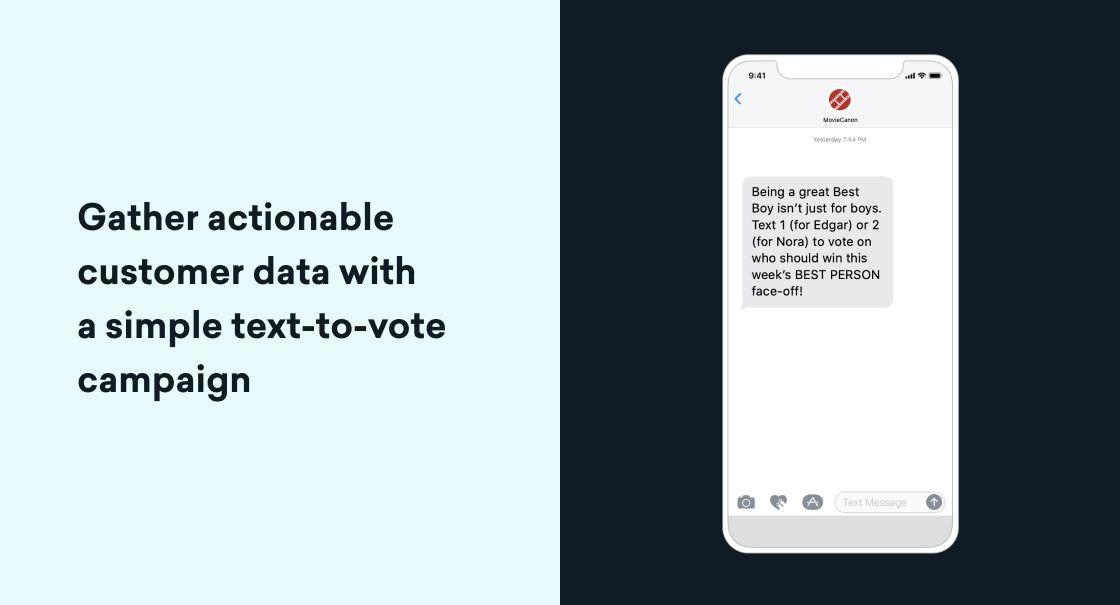
While this approach is most associated with media and streaming brands, creating a text-to-vote poll can work across a variety of verticals by making the act of sharing their interests or preferences feel empowering to users. You could pit different products or services against each other and then use individual recipients’ results to adjust the SMS messages you send them going forward.
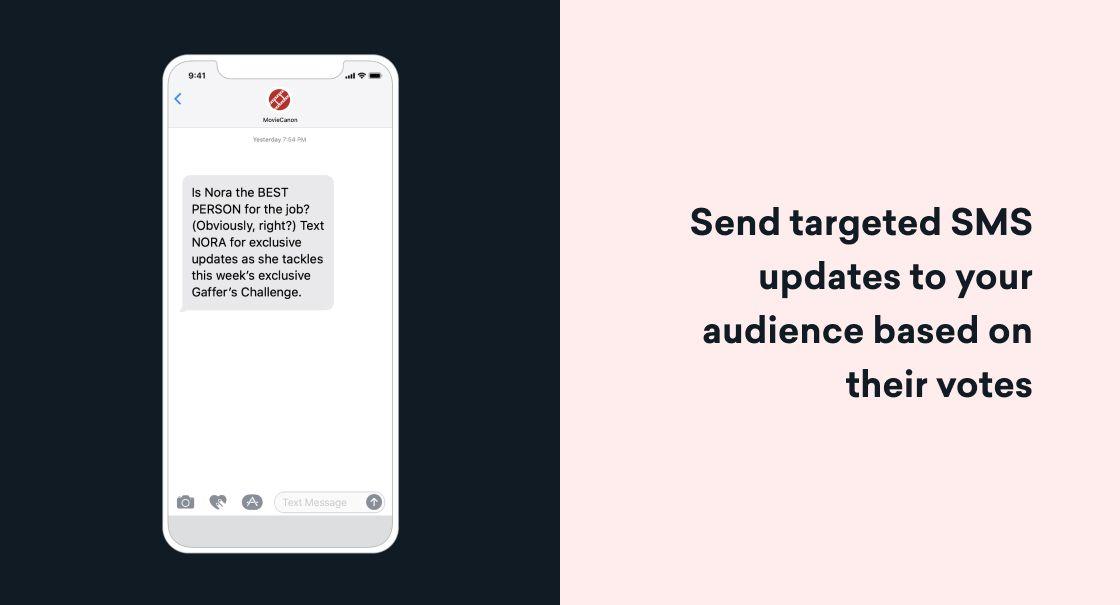
Now that you have insight into user preferences, you can use a customer journey management solution like Braze Canvas to build out segmented, targeted messaging flows for SMS. These flows can play off of those preferences and provide users with more relevant, meaningful SMS messages that encourage them to engage more frequency or more deeply with your brand.
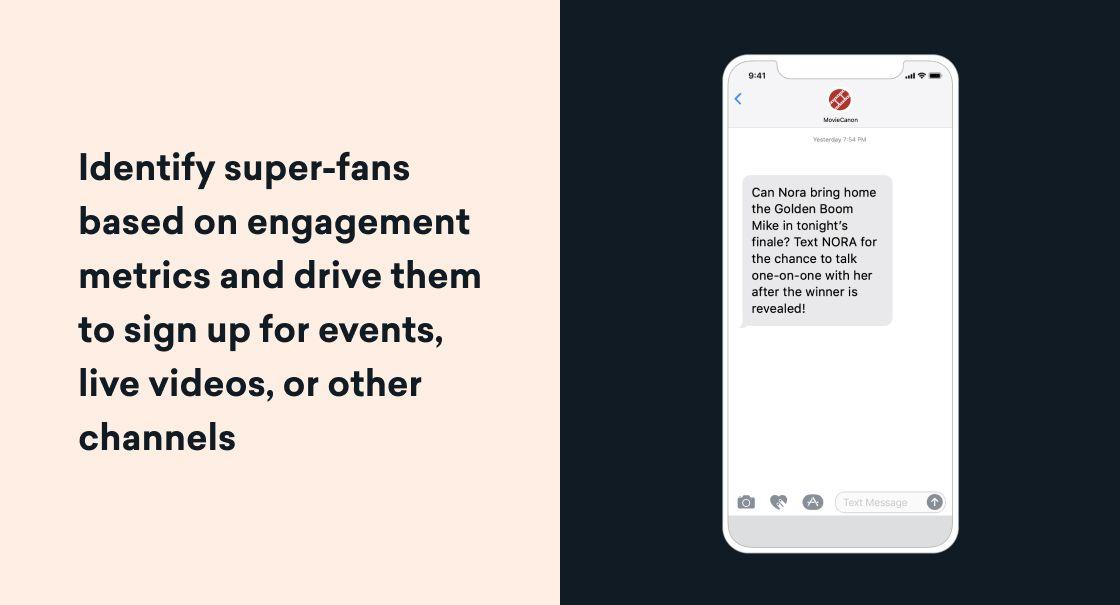
It’s natural for some users to be more engaged with your brand than others. By looking at SMS engagement data as it’s collected, you can get a picture of which customers are your brand super-fans and then use that information to drive more frequent or more intense engagement by offering targeted, relevant content and incentives. Building stronger relationships via SMS with these highly-engaged customers can be a powerful way to drive stronger results when it comes to your brand’s business goals.
Stage Three: Encouraging Dependable Engagement With Time-Sensitive SMS
Once your SMS program is successfully leveraging targeted, personalized messaging flows to gather useful customer data, drive stronger results, and provide super-users with unique, high-value experiences, the scene is set. Now it’s possible for your brand to build out SMS campaigns that boost ongoing engagement in connection with the release of new or updated products, services, or content.
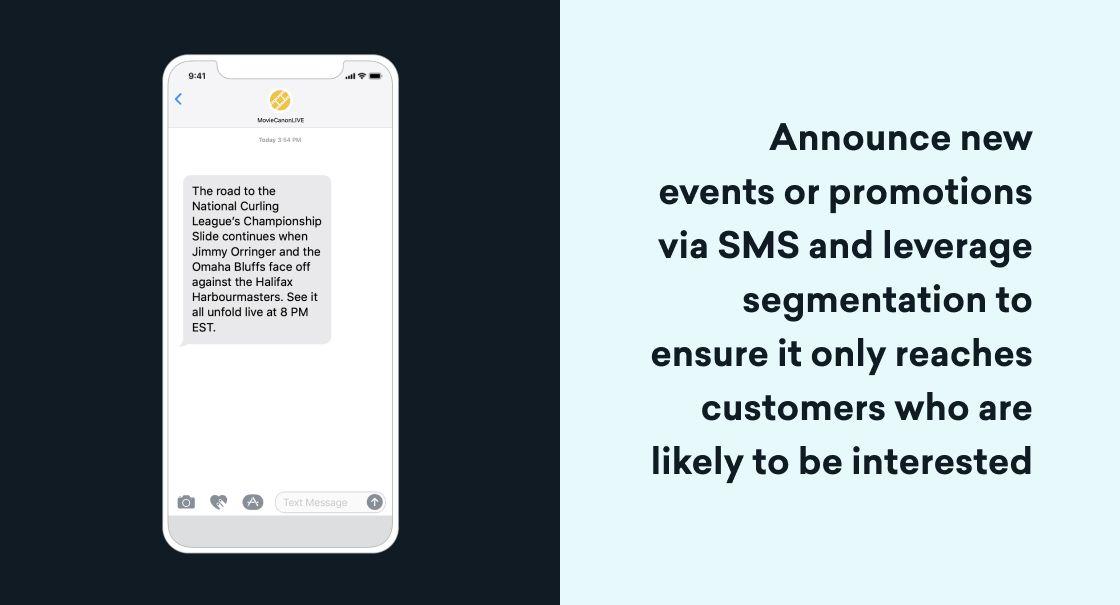
The first step is leveraging SMS to bring your campaign to customers likely to engage with this highly impactful channel. After all, announcements for new products, services, or content can be a great opportunity to connect with your customers and foster regular activity, especially among less-engaged or lapsing users.
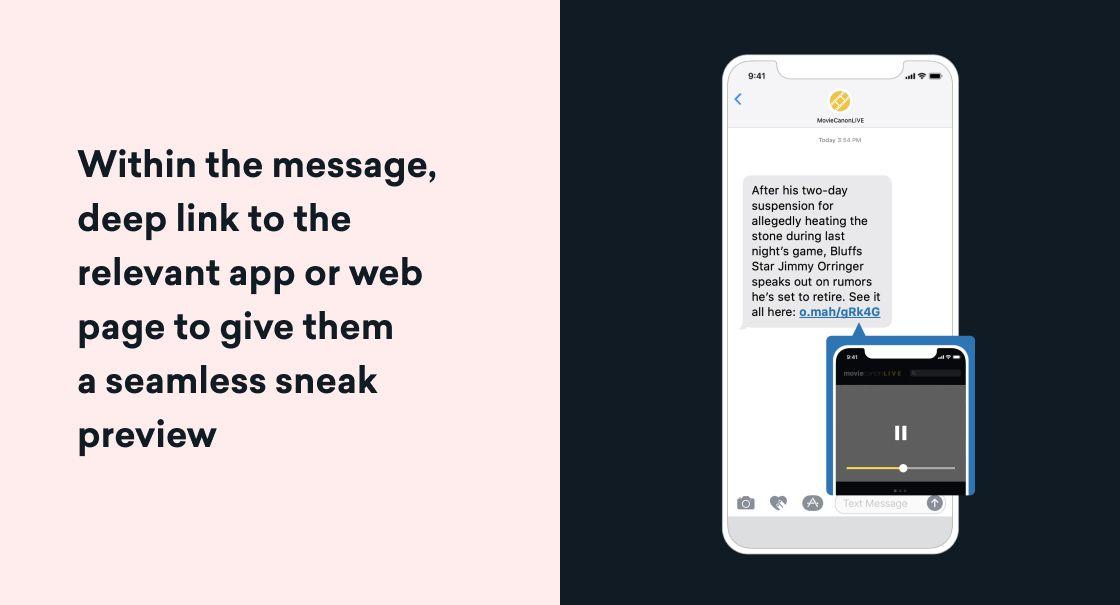
It’s also possible to build on these announcement notifications by leveraging deep links to bring recipients; directly to the relevant section or page of your app, supporting a more seamless, impactful experience. After all, the easier you make it for customers to take the action you’re nudging them about, the more likely they are to actually take that action.
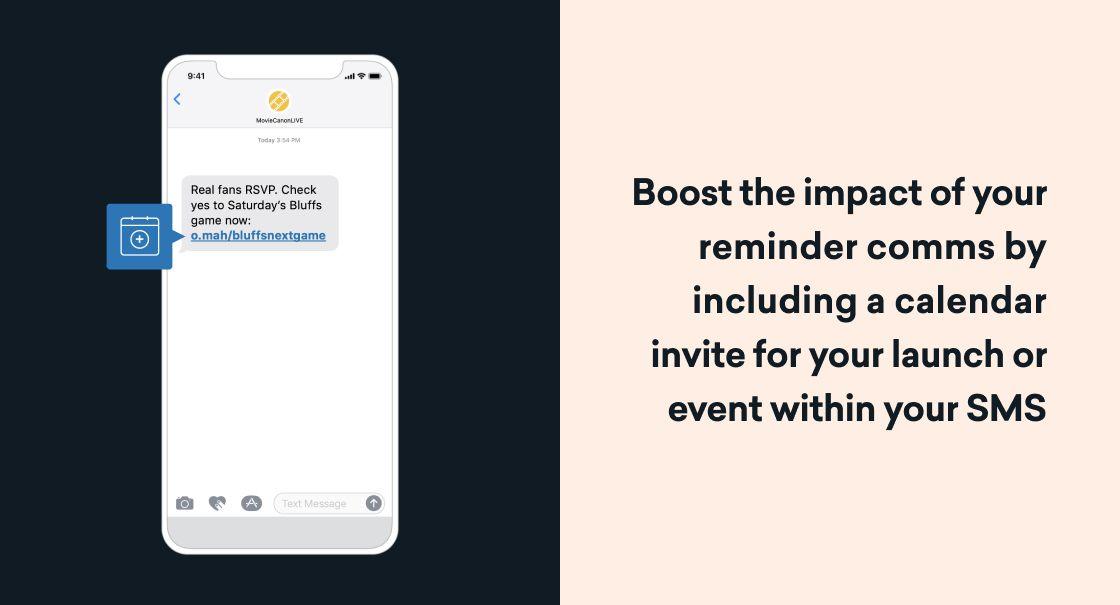
For brands looking to drive people to time-sensitive sales, events, or content, it’s possible to enrich the targeted SMS you send using an integration with digital calendar solutions. That way, instead of sending a customer four SMS messages about an upcoming event, you can send a single text message and that customer will receive calendar reminders designed to get them to attend.
Final Thoughts
This crawl/walk/run approach is just the beginning. Depending on your brand’s unique audience, value proposition, or marketing strategy, you can customize your SMS outreach in numerous ways to speak effectively to your customers.
That said, successfully reaching and activating your customers via a highly-engaged channel like SMS takes a comprehensive strategy, empathy, and the right data. To learn more about developing the right campaigns, check out SMS Marketing 101.
Related Tags
Releated Content
View the Blog
Are you AI-savvy enough to survive? A wake-up call for CMOs

Team Braze

What are contextual bandits? The AI behind smarter, real-time personalization

Team Braze

What is a multi-armed bandit? Smarter experimentation for real-time marketing
